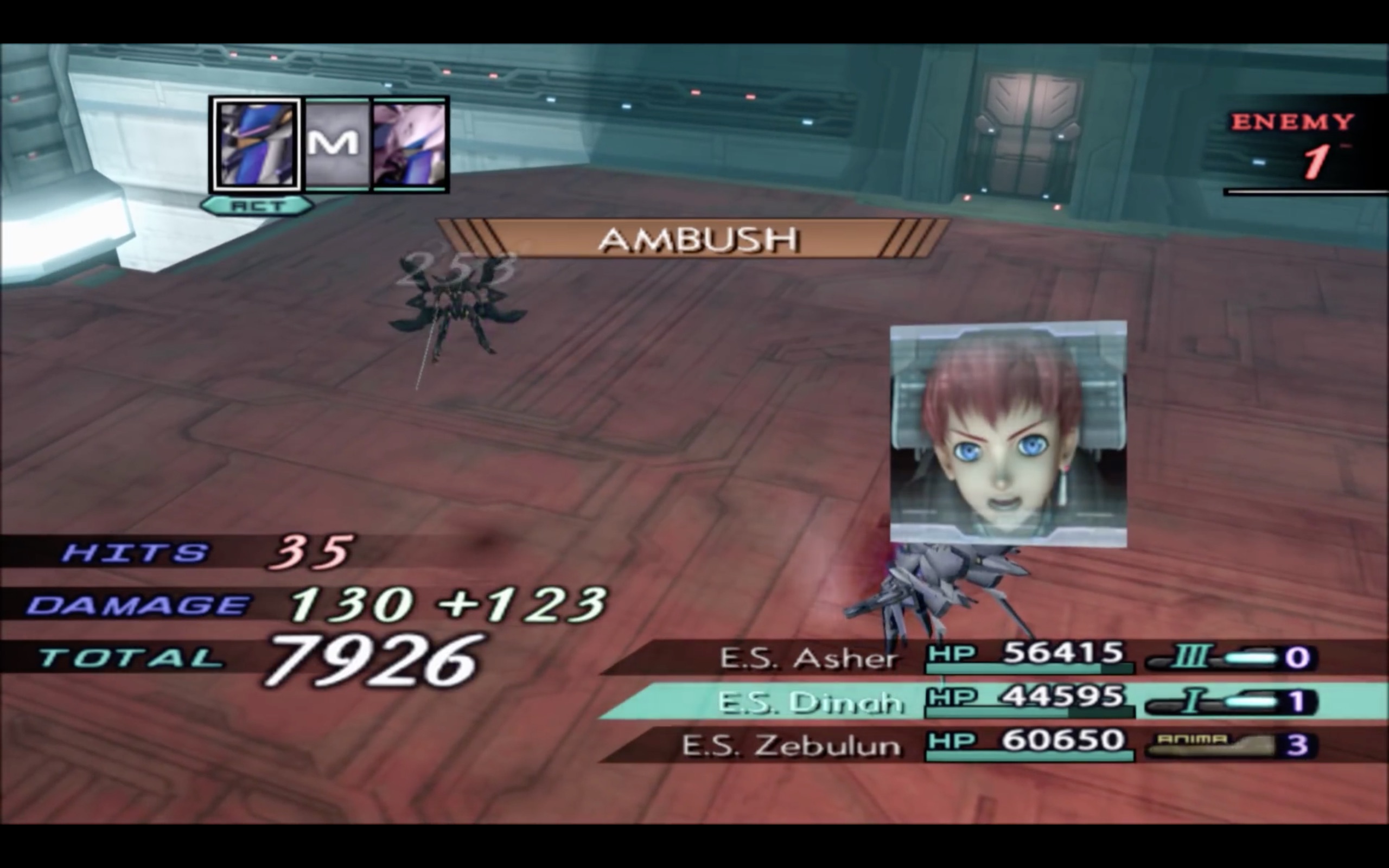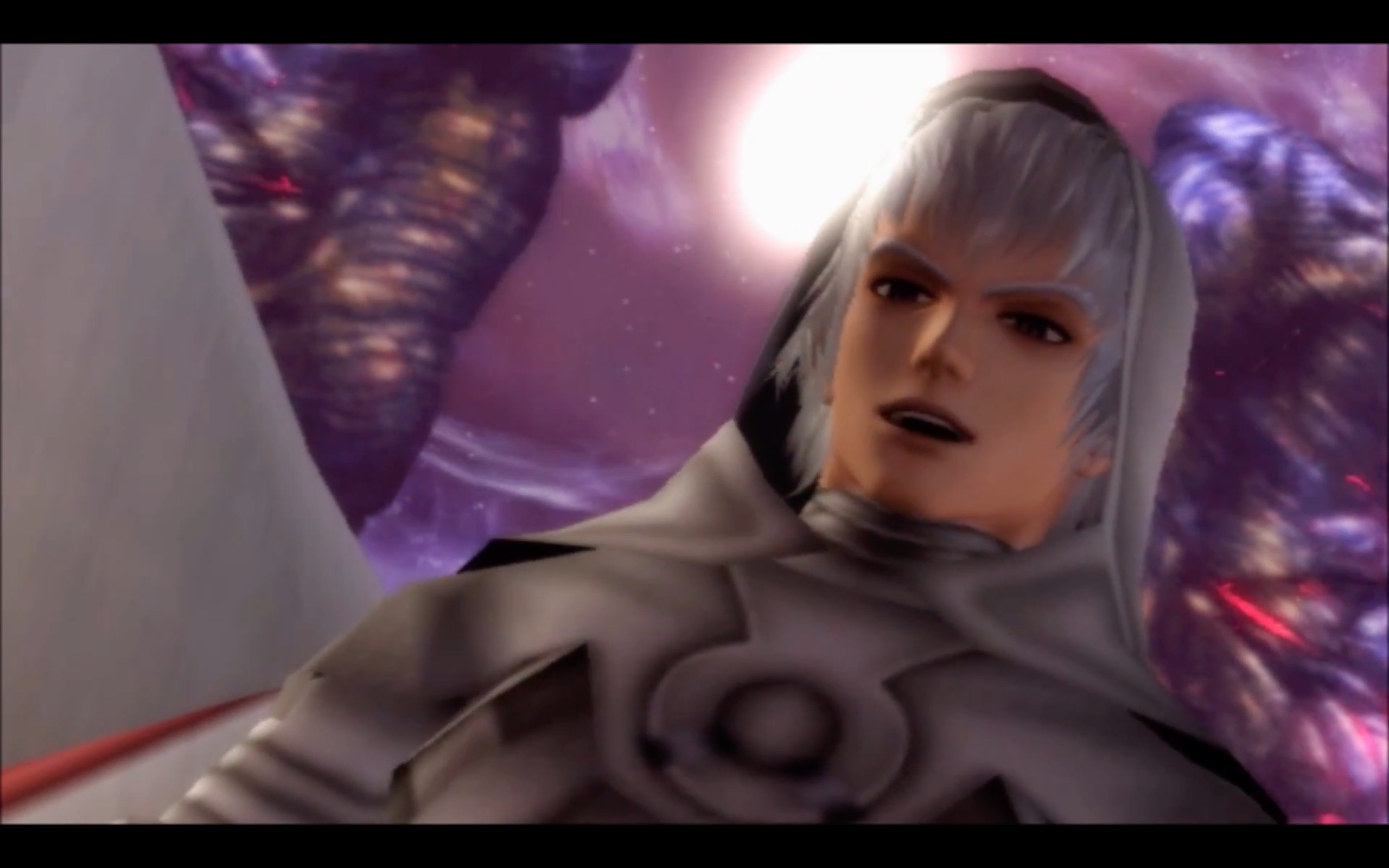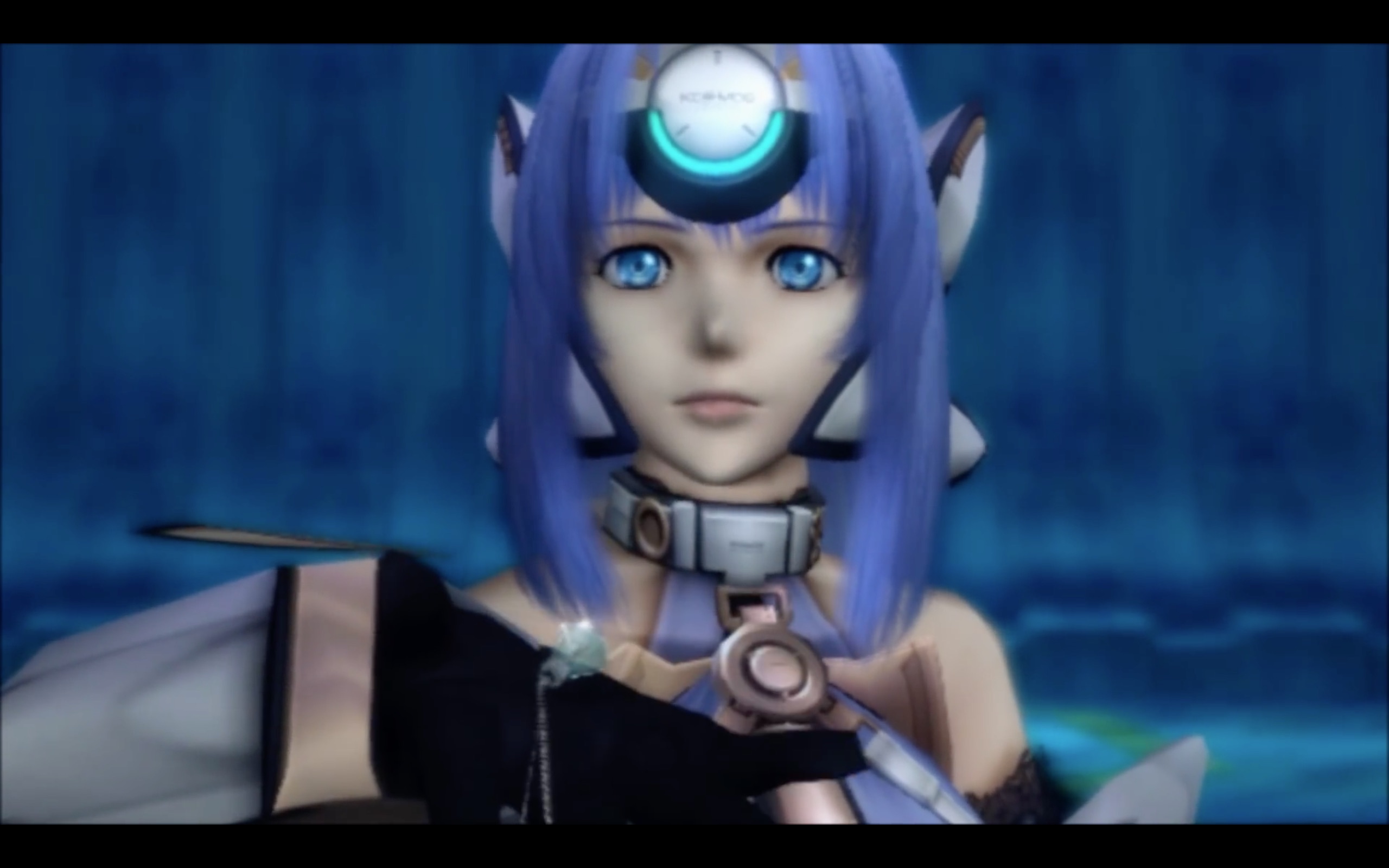Xenosaga Episode I was considered to be one of the top 50 RPGs of all time according to one of Game Informer’s most recent issues. The Xenosaga series itself is one of the most underrated RPG franchises of all time, dragged down by the disappointment of the second installment of the series, which wasn’t, in all honesty, that bad. The third installment in the series, Xenosaga Episode III: Also Sprach Zarathustra was by far the best game in the franchise. The story was spectacular, emotionally gripping, the music was spectacular, and the characters are the best of the series. It is Tetsuya Takahashi’s masterpiece, even if he only wrote the overall scenario for the game. If Xenosaga I was ranked as one of the best RPGs of all time, then surely Xenosaga Episode III, which surpasses it in every facet, should be considered among the greatest RPGs of all time. In fact, Xenosaga Episode III is the best RPG of all time.
Gameplay

While some may say that Also Sprach Tharasustra has the best turn-based combat of any turn-based RPG, even moreso than Final Fantasy X. One of the most of this system is the boost mechanic, which was introduced in Xenosaga I and has now been overhauled. Boosts are now limited to three total (more depending on accessories), which are shared among characters. There is a twist though. Boosts can also be used to carry out devastating attacks that, early on in the game, can be used as finishing blows. Finishing blows will earn you extra XP and skill points. Skill points can be used to advance your character in order to learn new abilities.

Players must consider a cost-benefit analysis, whether to use boosts to carry out special attacks or use them during combat. It can be quite tedious, especially late in the game. There is also a break gauge for each enemy, bosses, and your own characters included. These are very important when fighting bosses, as you want to save your boosts for when you break a boss so you can unleash a special attack. Enemies also have boosts though, so you have to be careful.

Boost attacks are not present in mech combat, but the mech combat in the game trumps mech combat in any game. While there are no boosts, each mech builds up an Anima gauge, and once it reaches a certain point they can perform a special attack. Some dungeons can only be navigated by ES’, which are what mechs are called in the game. While some bosses are harder than others, mech battles in the game are a lot of fun.

While Also Sprach Zarathustra may appear to be a linear game, it’s quite the opposite. There are Segment Address Doors hidden throughout the game which can be opened by decoders. By accessing the Encephalon, you are able to go back to previously visited areas in order to both access decoders and Segment Address Doors that were previously unattainable. Behind each door, there is a special item that can provide useful throughout the party’s journey. There are also a plethora of secrets hidden throughout the game. Ther’s more to the Xenosaga Episode III than meets the eye.
The boss battles in the game are also some of the best of any game in existence. Each battle has it’s own unique, moving piece of music that fits each confrontation perfectly. And there are a lot of them. Each fight is challenging, but strategy is key.
Story

The story of Xenosaga Episode III: Also Sprach Zarathustra is the best of any story in any genre, period. The lore is fascinating, taking from Carl Jung, Nietzsche, Gnosticism, Christianity, and so much more. Ultimately that’s a backdrop though, as intriguing as it is. It’s a story of people facing their past instead of running away. It is a story of man trying to conquer their fear. It is a story of moving forward, no matter what, despite the horrors of their past.

Ultimately, it’s a story of people fighting to live this moment, to quote Shion. While characters like Wilhelm seek to rewind time and return everything to the beginning, our characters reject that. They want to move forward, despite the inevitable dissipation of their world. The characters are also incredibly complex and it’s a shame so much was cut out of the series, as we only have a slight glimpse of some of their backgrounds, especially Ziggy. His chapter is one of the highlights of the game.
Shion is probably the weak link in all of this, but, even still, she’s a better protagonist than in most games, and this game is about her. She was one of the first strong female protagonists in any game and that’s important. Remember, this was the early 2000s.
She’s weak, she’s suffered so much pain in her life, but despite that, she keeps moving forward. Ziggy is actually quite a fascinating character his backstory in the third installment of the saga is one of the highlights+ of the game. Canaan, despite being an NPC, truly shines and his arc is one of the best in the game.

Rubedo/JR is the best character in the series and has a level of depth that few characters in games have today. Jin is multi-layered and one of the best characters in the series. KOS-MOS is an android, yes, but her true identity, her “heart”, gives her a very interesting arc. Even the villains in the game aren’t so black and white, such as Virgil. His story with Febronia is one of the most touching arcs in any video game. Albedo is the best villain in gaming. Period. His complexity and background are unrivaled.

chaos, a member of your team, is very..let’s say interesting. He’s lived for thousands of years and although he’s a god-like figure, and literally the spiritual form of Jesus if you follow Gnostic Christianity. His character arc is very interesting, shrouded in mystery, despite his limited time in Episode III. One of the most intriguing aspect of his character is his true name is Yeshua, which was Jesus’ true name.

The best part of Xenosaga Episode III is that every character, even the major characters who are not playable get their own personal moment and spotlight to close out their character arc. That is so rare in games today and it really makes the game shine. One prime example is Ziggy. His backstory was actually told in a mobile game, but they still incorporated parts of it, and even if it was hard to follow, it was incredibly emotional and it worked. The execution in Xenosaga III is impeccable.
Music

As much as I love Yasunori Mitsuda, Yuki Kajiura was the perfect choice to compose the second two Xenosaga installments. Her music, especially in Episode III, is unparalleled. Simply put, it’s one of the best scores, if not the best, to grace any video game. The score contains soft, subtle motifs as well as epic themes. The boss fight music stands out the most, and there are quite a few of them. This is Yuki Kajiura’s best work, and her portfolio is more than impressive, spanning some of the best anime titles to date, such as Fate/Zero, Sword Art Online, and the latest Fate film, Heaven’s Feel. And that’s not even the half of it. Kajiura is able to deliver a score which is both epic in scope but also somber in key moments.
The Bottom Line

RPGs are by no means lackluster this generation. Even Tetsuya Takahashi has come out with one of the best RPGs in years, Xenoblade Chronicles 2. Chronicles 2 is Xenosaga light though, but it’s still an amazing game. Xenosaga Episode III is just better. Xenosaga Episode III: Also Sprach Zarathustra is the pinnacle of turn-based gaming, has both the best protagonists and villains in any video game, the best and most ambitious story of any video game, ever, and some of the best music of any genre. Perhaps the series was a bit too ambitious, hence why it was canceled, but it holds up to today’s games. A remaster would be wonderful, but playing the games as-is is fine as well.

All the Xenosaga games are fantastic, but Episode III takes all those pieces and puts them together into one of the best pieces of fiction and gameplay of any RPG and video game.
